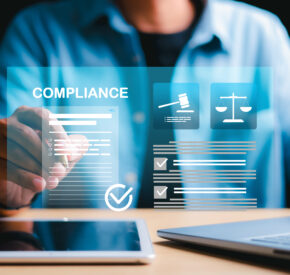Defend Section 504 and Equal Access
How Texas v. Becerra endangers disability rights and what we can do

I could start this essay by declaring my status as a business leader of a digital accessibility firm, or as a parent whose child benefited from 504 protections in school. But those bona fides are not necessary when we are talking about civil and human rights. There is a lawsuit, Texas v. Becerra, which threatens to dismantle Section 504 of the Rehabilitation Act of 1973, saying it is unconstitutional. This legal challenge, brought forth by 17 states, not only jeopardizes the rights of millions of Americans but also undermines the very foundation of equal access and opportunity that our nation strives to uphold. I am asking readers, as fellow citizens and humans, to become aware of this lawsuit and get involved.
Section 504 has been key to disability rights for nearly fifty years. It ensures that people with disabilities can access education, jobs, healthcare, and public services equally. It prohibits discrimination against people with disabilities in any program or activity that receives federal funding. The importance of this legislation cannot be overstated (hear more from Alison Barkoff, former head of HHS’ Administration for Community Living and a lifelong disability advocate). Long before the Americans with Disabilities Act (ADA), it paved the way for those with disabilities and other use constraints to be fully integrated participants in society.
As this term may be new to you, I’d like to take a moment to share what I mean by a ‘use constraint’? Any barrier a user has to accessing information can be considered a use constraint. Use constraints capture a range of barriers, including permanent, temporary, episodic, and situational disabilities. It is important to understand that 504, like many other pieces of civil rights legislation, not only benefits and protects the 1 in 4 people who self-disclose a permanent disability. It goes beyond that to positively impact all our lives in countless ways. Plainly stated – this affects you and the people you care about.
My first encounter with Section 504 came with my daughter. 504 helps students get the accommodations they need. This can include assistive technologies, longer test times, or modified assignments. For students like my daughter, who did not qualify for an Individualized Education Program (IEP), these basic accommodations can make a real difference. They allow students with a broad range of use constraints to access the same educational opportunities as their peers.
504’s reach goes beyond the classroom, mandating accessibility in healthcare, government, and employment. For instance, it requires hospitals to provide sign language interpreters, ensures captioning for videos, and mandates accessible medical equipment for wheelchair users. These provisions are not mere conveniences – they are essential for people with disabilities to take part in all aspects of life. During COVID-19, as fear ramped up and information was at a premium, ensuring access to information digitally or in person was literally a lifesaver. With so much confusing information online, having access to trusted sites is critical.
The plaintiffs in this lawsuit argue that 504 is “coercive” and “untethered to the federal interest in disability”. What?!? This claim fundamentally misunderstands the purpose and impact of the law. Section 504 is not about coercion; it’s about ensuring equal opportunity and access for all Americans. It reflects our nation’s commitment to inclusivity and fairness, values that are at the core of our society. “We hold these truths to be self-evident, that all [people] are created equal. That they are endowed by their Creator with certain inalienable Rights, among these are Life, Liberty and the Pursuit of Happiness.” Perhaps this is only self-evident to some.
The potential consequences of this lawsuit are far-reaching and deeply concerning. If it succeeds, it could remove key protections, making it easier for discrimination against individuals with disabilities to go unchallenged. This would not only be a massive step backward for civil rights, but it would also have severe implications for millions of Americans who rely on these protections daily.
The updated ruling of 504 clarifies what was once unclear, offering long overdue direction in the digital world. The law helps to ensure websites, apps, documents, and digital content is accessible for people with disabilities. Without these protections, we risk creating a digital divide that leaves those with disabilities and the growing number of elderly people behind. This would keep a clear majority of our population from accessing essential information and services.
Disability rights are human rights. Section 504 protects not only individuals with disabilities but also benefits society overall. Creating inclusive environments in schools, offices, and public spaces helps everyone reach their full potential.
The attack on 504 is not just a legal battle. It’s a moral one, challenging us to reaffirm our commitment to equality for all. At Tamman, we remain committed to our mission of making the digital world accessible to all. We will continue to work tirelessly to ensure that technology serves as a bridge, not a barrier, for people with disabilities. But we cannot do this alone. We call on our colleagues in the tech industry, education sector, healthcare, and beyond to join us in defending 504 and the principles it represents.
The lawsuit against Section 504 is not just an attack on a single law; it’s an assault on the progress we’ve made toward a more inclusive society. We must not allow five decades of advancement in disability rights to be undone. Let’s unite and reaffirm our commitment to equality. We must ensure Section 504 continues to protect and empower individuals with disabilities for generations to come.
Here are specific steps that anyone can take to push back against the Texas v. Becerra lawsuit and make their voices heard:
Contact Your State Attorney General
- Determine if your state is part of the 17 states involved in the lawsuit (Alaska, Alabama, Arkansas, Florida, Georgia, Indiana, Iowa, Kansas, Louisiana, Missouri, Montana, Nebraska, South Carolina, South Dakota, Texas, Utah, and West Virginia).
- Prepare your message:
- If your state is involved, demand that it withdraw from the case.
- If your state is not involved, ask them to support Section 504 by filing an amicus brief or signing on to defend the law.
- Craft a personal email or letter: Use the following structure:
- Introduce yourself and mention your location.
- Explain why Section 504 is important to you or your community.
- Share a personal story about how Section 504 has impacted your life.
- Express your concerns about the lawsuit.
- State your request clearly (withdraw from the case or support Section 504).
- Use multiple communication channels:
- Email your Attorney General directly.
- Use their official website contact form.
- Call their office.
Engage with Disability Rights Organizations
- Join advocacy efforts. Connect to organizations like the National Association of the Deaf (NAD) and the Disability Rights Education and Defense Fund (DREDF) to participate in coordinated actions.
- Attend community briefings. Participate in informational sessions organized by disability rights groups to stay informed and learn about collective action strategies.
- Educate yourself:
Mobilize Your Network
- Encourage others to act. Share templates and guides for contacting Attorneys General with friends, family, and colleagues.
- Create or join local action groups. Organize letter-writing campaigns or phone banks in your community.
Engage with Elected Officials
- Contact your representatives. Get in touch with your local, state, and federal elected officials to let them know your concerns and request their support to defend Section 504.
- Attend town halls or public meetings to raise awareness about the issue and ask officials to take a stand.
Utilize Online Advocacy Tools
Sign and share petitions. Look for and circulate online petitions supporting Section 504 and opposing the lawsuit.
Use advocacy platforms. Websites like 5calls.org provide scripts and contact information for reaching out to officials about specific issues like the Texas v. Becerra case.
___
Marty Molloy, the President of Tamman, is a passionate leader dedicated to building inclusive teams and fostering a culture of growth. With a background in non-profit leadership and education, he is committed to leveraging technology to create positive impact and make the world more accessible and equitable for all.





